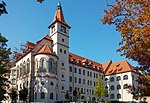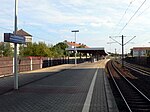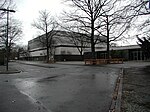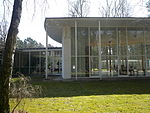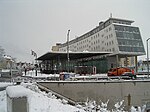Business Tower Nürnberg
2000 establishments in Germany21st-century architecture in GermanyBuildings and structures completed in 2000Buildings and structures in NurembergModernist architecture in Germany ... and 4 more
Office buildings completed in 2000Skyscraper office buildings in GermanySkyscrapers in GermanySustainable buildings and structures

The Business Tower Nürnberg (German: Nürnberg Geschäftsturm) is a high-rise office building in Nürnberg, Germany. Built between 1996 and 2000, the tower stands at 135 m (443 ft) tall with 35 floors and is the current tallest building in Nuremberg and the first 100 meters high-rise building in the city, as well as the 35th tallest in Germany.
Excerpt from the Wikipedia article Business Tower Nürnberg (License: CC BY-SA 3.0, Authors, Images).Business Tower Nürnberg
Ostendstraße, Nuremberg Tullnau
Geographical coordinates (GPS) Address Website External links Nearby Places Show on map
Geographical coordinates (GPS)
| Latitude | Longitude |
|---|---|
| N 49.454581 ° | E 11.116883 ° |
Address
Business Tower
Ostendstraße 100
90482 Nuremberg, Tullnau
Bavaria, Germany
Open on Google Maps

